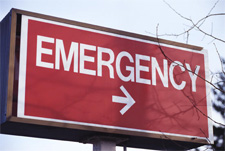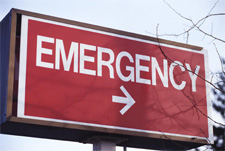
 Hardly a week passes without news of a natural or man-made disaster somewhere in the United States or around the world. Floods, tornadoes, earthquakes, ice storms… the list goes on. One thing is certain. If you get through a single year without so much as a power outage, you’ve had a great year.
Hardly a week passes without news of a natural or man-made disaster somewhere in the United States or around the world. Floods, tornadoes, earthquakes, ice storms… the list goes on. One thing is certain. If you get through a single year without so much as a power outage, you’ve had a great year.
In my area of suburban Connecticut we’ve had three weather-related power outages so far this year, and it’s only July. The worst outage, during a windstorm in March, knocked out power for five days for some homeowners. That’s not just an inconvenience. That’s a serious, sometimes dangerous, situation.
While many people keep emergency preparedness kits at home, they often overlook the workplace. That doesn’t really make sense. Your chances of getting caught in an emergency at work are significant. Yet few of us who work outside the home have made any preparations for the unthinkable. It’s as if we think the office manager has got all that stuff covered. And that’s not smart.
Here’s the scenario: You are at work. Out of the blue, a disaster hits. It doesn’t really matter what causes it. Let’s say it brings:
– Power outages|
– Lights and heat out
– Landline phones down
– Major transportation disrupted
– Blizzard weather conditions
– Water shut off
And you’re stuck at work. Perhaps overnight. It’s your worst nightmare.
Unless, that is, you had the foresight to put together your very own Work Emergency Preparedness Kit. If you’d had such foresight, here’s what it might include:
• Contact info and directions for the 3 closest hotels/motels
• Black & Decker “Storm Station” to keep cell phone charged
• Flashlight and extra batteries
• Battery-powered lantern
• Emergency blanket
• Extra toothbrush and toothpaste
• Backup personal hygiene items
• A sleeping bag (in case you can’t get to the motel)
• Some extra cash
• Emergency phone numbers – family, friends, neighbors
• A good book that you haven’t read
• Some canned or freeze-dried food
• A gallon jug of fresh water
• A manual can opener
• A deck of cards
• A battery-powered radio
• Some comfortable clothes, such as sweats
• A good sense of humor (you can’t store it, but you can develop it for a rainy day)
Those items may not sound like they’ll bring you much comfort, but imagine for a second if you have none of the above in your workplace work when disaster hits. You’d be left without any options at all, other than spending some cold, dark hours curled up in your office chair, sipping the remnants of your cold coffee from breakfast.
You can adjust the contents of the kit to suit your particular needs, storage space available to you, climate, and so on. An emergency work preparedness kit isn’t meant to replicate a 4-star hotel. But it is meant to give you a modicum of comfort and safety, in circumstances that you hope will never arise. But if they do, you’ll want to be ready.
This is a guest post by Neil Street. He is a freelance writer who has written frequently about small business. His most recent project involved portfolio and derivatives risk management.
Leave a Reply